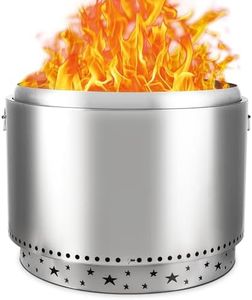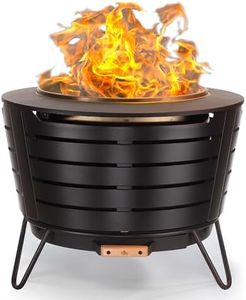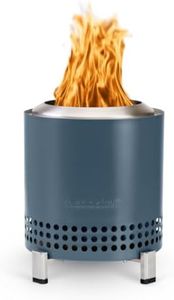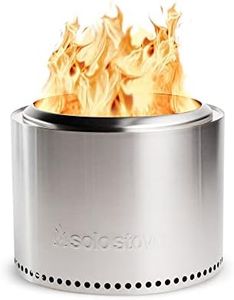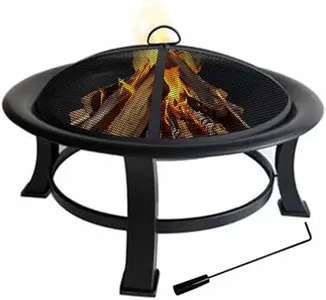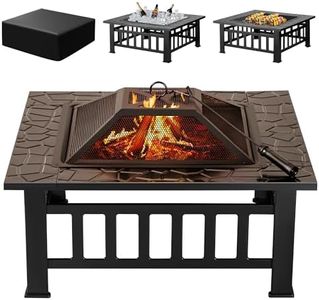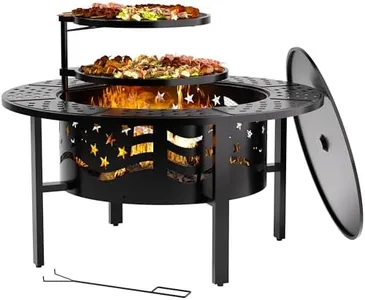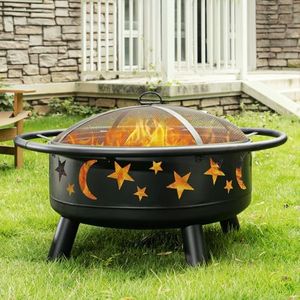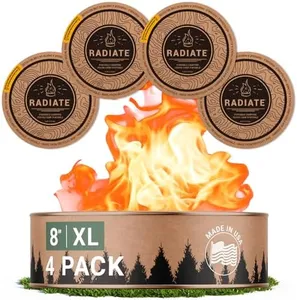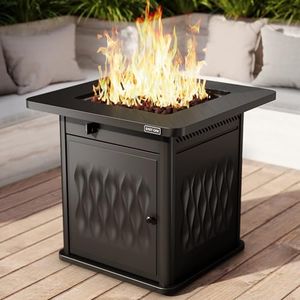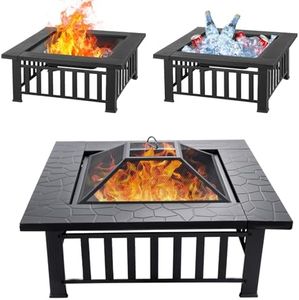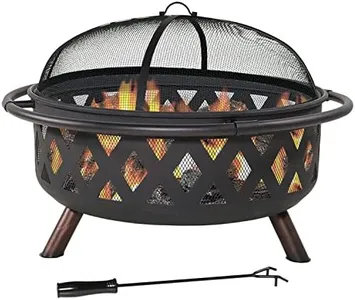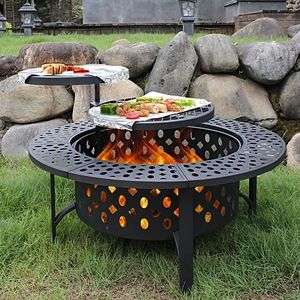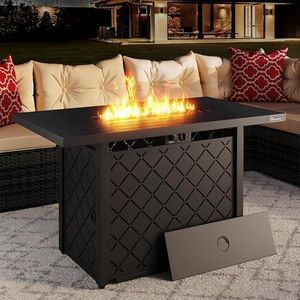We Use CookiesWe use cookies to enhance the security, performance,
functionality and for analytical and promotional activities. By continuing to browse this site you
are agreeing to our privacy policy
10 Best Outdoor Fire Pits 2025 in the United States
How do we rank products for you?
Our technology thoroughly searches through the online shopping world, reviewing hundreds of sites. We then process and analyze this information, updating in real-time to bring you the latest top-rated products. This way, you always get the best and most current options available.

Buying Guide for the Best Outdoor Fire Pits
Choosing the right outdoor fire pit can enhance your outdoor living space, providing warmth, ambiance, and a focal point for gatherings. When selecting a fire pit, it's important to consider various factors to ensure it meets your needs and preferences. Here are some key specifications to help you make an informed decision.Fuel TypeThe fuel type determines how the fire pit operates and the kind of maintenance it requires. Common fuel types include wood, propane, and natural gas. Wood-burning fire pits offer a traditional campfire experience with crackling sounds and a smoky aroma, but they require more effort to start and clean. Propane fire pits are convenient and easy to use, providing instant flames with the push of a button, but they require propane tank refills. Natural gas fire pits are connected to your home's gas line, offering a continuous fuel supply, but they require professional installation. Choose a fuel type based on your preference for convenience, maintenance, and the kind of ambiance you want to create.
MaterialThe material of the fire pit affects its durability, appearance, and maintenance. Common materials include steel, cast iron, aluminum, and stone. Steel fire pits are durable and often come with heat-resistant coatings, but they can rust over time if not properly maintained. Cast iron fire pits are extremely durable and retain heat well, but they are heavy and can be prone to rust. Aluminum fire pits are lightweight, rust-resistant, and easy to move, but they may not retain heat as well as other materials. Stone fire pits offer a natural and rustic look, are highly durable, but can be more expensive and difficult to move. Consider the climate in your area, the desired aesthetic, and how much maintenance you're willing to perform when choosing the material.
Size and ShapeThe size and shape of the fire pit determine how much space it will occupy and how many people can comfortably gather around it. Fire pits come in various shapes, including round, square, and rectangular. Round fire pits are great for creating a central gathering spot and promoting conversation. Square and rectangular fire pits can fit well in corners or along the edges of outdoor spaces. The size of the fire pit should be proportional to the size of your outdoor area. A larger fire pit is suitable for bigger spaces and larger groups, while a smaller fire pit is ideal for more intimate settings. Consider the number of people you typically entertain and the layout of your outdoor space when selecting the size and shape.
Heat OutputHeat output is measured in British Thermal Units (BTUs) and indicates how much heat the fire pit can produce. Higher BTU ratings mean more heat. For wood-burning fire pits, heat output is generally determined by the size of the fire and the type of wood used. For gas fire pits, BTU ratings typically range from 30,000 to 100,000 BTUs. If you plan to use the fire pit primarily for warmth, especially in cooler climates, opt for a higher BTU rating. If the fire pit is mainly for ambiance and occasional use, a lower BTU rating may suffice. Consider your climate and how you intend to use the fire pit when evaluating heat output.
Safety FeaturesSafety features are crucial to ensure safe operation and prevent accidents. Look for fire pits with features such as spark screens, which prevent embers from escaping, and safety shut-off valves for gas fire pits, which allow you to quickly turn off the gas supply. Some fire pits also come with protective covers to shield the fire pit from the elements when not in use. If you have children or pets, consider fire pits with built-in safety barriers or guards. Prioritize safety features that align with your specific needs and usage scenarios to ensure a safe and enjoyable experience.
PortabilityPortability refers to how easily you can move the fire pit around your outdoor space. Portable fire pits are typically lighter and may come with wheels or handles for easy transport. This is ideal if you plan to rearrange your outdoor setup frequently or take the fire pit with you on camping trips. Permanent fire pits, on the other hand, are heavier and designed to stay in one place, often becoming a fixed feature of your outdoor area. Consider how you plan to use the fire pit and whether you need the flexibility to move it around when deciding on portability.
Most Popular Categories Right Now
